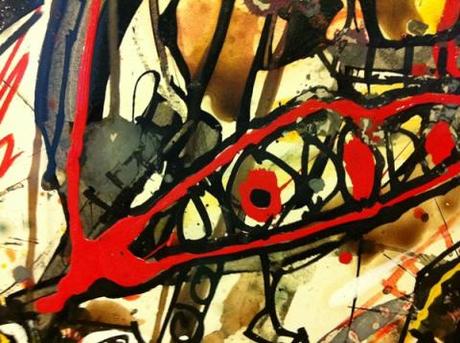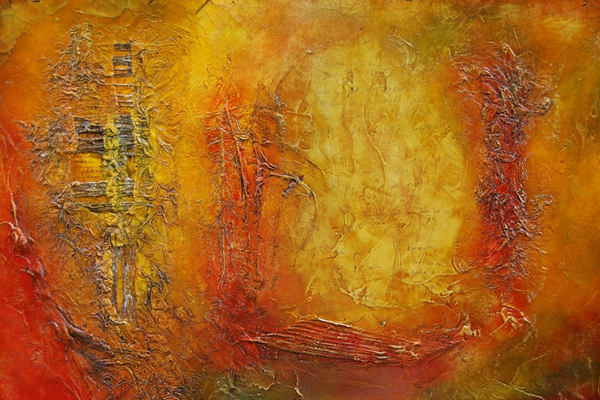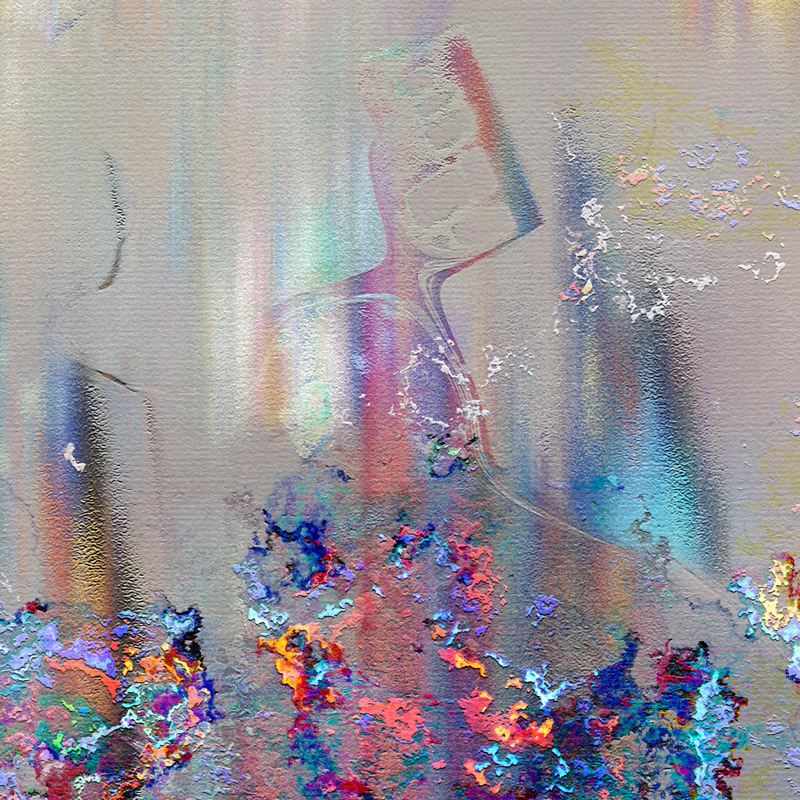Abstract Art Definition Definition
Source(Google.com.pk)
For over 100 years viewers have debated the merits of this modern art movement and there is no sign of the dialog stopping…or the art. With every abstract painting or modern art sculpture, contemporary artists carry on a tradition of creating a world that did not exist before. These artists use an aesthetic language of color, form, and line to push the boundaries of what we consider to be art and challenge us to widen our perspective.Although modern abstract artwork is, by definition, non-representational, not all of the work is completely non-objective art. Each artist finds ideas in something uniquely important to him. Abstract artists such as Willie Marlowe and Robert Ruckman are fascinated with symbolism from ancient cultures and ancient religions. Mary Anne Keel Jenkins has created a wide range of abstract paintings and collages that reflect her interests in ancient architecture on the one hand and her moral outrage at war on the other. The modern art of Cynthia Knapp reflects nature and natural organic forms while Elise P. Speights paints instinctively and lets color and pattern take it’s own course.The best of contemporary abstract art walks a fine line; on first glance we may only see marks on paper or paint on canvas but on closer inspection we are reminded of a memory, a feeling, a place or an idea. The freedom from representational image allows us to see what we want and interpret how we feel without constraint. Abstract art can be an art of pure emotion, of mathematical exactitude or dynamic energy. But in the end it is up to us to decide what we are seeing in each piece and, by doing so, we participate in the creative process and bring these works to life.Abstract art is not an invention of the twentieth century. In the Jewish and Islamic religion the depiction of human beings was not allowed. Consequently the Islamic and Jewish cultures developed a high standard of decorative arts. Also calligraphy is a form of non-figurative art.In the twentieth century Wassily Kandinsky is considered as the inventor of non-figurative art. Over a period of several years his paintings moved gradually away from figurative subjects. In 1910 he created the first completely abstract work of art - a watercolor - without any reference to reality. Wassily Kandinsky not only became the first abstract artist, he also promoted it as a theorist. In 1912 his book On the Spiritual in Art was published.In 1915 another Russian, Kasimir Malewich 1878-1935, exhibited abstract paintings with mostly geometrical forms. While Kandinsky worked in Germany, Malevich had the center of his activity in Moscow. His book The Non-Objective World was published at the Bauhaus in 1927. His radical approach of reducing art to simple geometrical forms, is called the Suprematist movement. Inevitably Malewich got in conflict with the concept of Soviet realism and died in 1935 in oblivion.Abstract ExpressionismWorld War II and Hitler's persecution of the Jewish people and the condemnation of modern art by the Nazis, led to a wave of immigration of European avant-garde artists to the United States - mainly to New York.The result was an enormous impact on contemporary American artists. The art movement called Abstract Expressionism was born. It is less a style than a concept of performing art in a spontaneous way without the limits of conventional forms.Abstract Expressionism was centered in New York. The best known names are Jackson Pollock, Willem de Kooning and Mark Rothko. Other terms used in connection with Abstract Expressionism are New York School and Action Painting - all meaning more or less the same.An abstract idea is an idea that can be interpreted in many different ways. Some examples include:Betrayal, Charity, Courage, Cowardice, Cruelty, Forgiveness, Truth, Love, Anger, Fear, Grief, Happiness, Jealously, Sympathy, Insanity, Knowldege, Wisdom, Right/Wrong, Duty, Fame, Justice, Liberty, Friendship, Greed, Innocence, Rules, Social Norm, and Religion.
For over 100 years viewers have debated the merits of this modern art movement and there is no sign of the dialog stopping…or the art. With every abstract painting or modern art sculpture, contemporary artists carry on a tradition of creating a world that did not exist before. These artists use an aesthetic language of color, form, and line to push the boundaries of what we consider to be art and challenge us to widen our perspective.Although modern abstract artwork is, by definition, non-representational, not all of the work is completely non-objective art. Each artist finds ideas in something uniquely important to him. Abstract artists such as Willie Marlowe and Robert Ruckman are fascinated with symbolism from ancient cultures and ancient religions. Mary Anne Keel Jenkins has created a wide range of abstract paintings and collages that reflect her interests in ancient architecture on the one hand and her moral outrage at war on the other. The modern art of Cynthia Knapp reflects nature and natural organic forms while Elise P. Speights paints instinctively and lets color and pattern take it’s own course.The best of contemporary abstract art walks a fine line; on first glance we may only see marks on paper or paint on canvas but on closer inspection we are reminded of a memory, a feeling, a place or an idea. The freedom from representational image allows us to see what we want and interpret how we feel without constraint. Abstract art can be an art of pure emotion, of mathematical exactitude or dynamic energy. But in the end it is up to us to decide what we are seeing in each piece and, by doing so, we participate in the creative process and bring these works to life.Abstract art is not an invention of the twentieth century. In the Jewish and Islamic religion the depiction of human beings was not allowed. Consequently the Islamic and Jewish cultures developed a high standard of decorative arts. Also calligraphy is a form of non-figurative art.In the twentieth century Wassily Kandinsky is considered as the inventor of non-figurative art. Over a period of several years his paintings moved gradually away from figurative subjects. In 1910 he created the first completely abstract work of art - a watercolor - without any reference to reality. Wassily Kandinsky not only became the first abstract artist, he also promoted it as a theorist. In 1912 his book On the Spiritual in Art was published.In 1915 another Russian, Kasimir Malewich 1878-1935, exhibited abstract paintings with mostly geometrical forms. While Kandinsky worked in Germany, Malevich had the center of his activity in Moscow. His book The Non-Objective World was published at the Bauhaus in 1927. His radical approach of reducing art to simple geometrical forms, is called the Suprematist movement. Inevitably Malewich got in conflict with the concept of Soviet realism and died in 1935 in oblivion.Abstract ExpressionismWorld War II and Hitler's persecution of the Jewish people and the condemnation of modern art by the Nazis, led to a wave of immigration of European avant-garde artists to the United States - mainly to New York.The result was an enormous impact on contemporary American artists. The art movement called Abstract Expressionism was born. It is less a style than a concept of performing art in a spontaneous way without the limits of conventional forms.Abstract Expressionism was centered in New York. The best known names are Jackson Pollock, Willem de Kooning and Mark Rothko. Other terms used in connection with Abstract Expressionism are New York School and Action Painting - all meaning more or less the same.An abstract idea is an idea that can be interpreted in many different ways. Some examples include:Betrayal, Charity, Courage, Cowardice, Cruelty, Forgiveness, Truth, Love, Anger, Fear, Grief, Happiness, Jealously, Sympathy, Insanity, Knowldege, Wisdom, Right/Wrong, Duty, Fame, Justice, Liberty, Friendship, Greed, Innocence, Rules, Social Norm, and Religion.
Abstract Art Definition Pictures Galleries Wallpaper Paintings

Abstract Art Definition Pictures Galleries Wallpaper Paintings


Abstract Art Definition Pictures Galleries Wallpaper Paintings


Abstract Art Definition Pictures Galleries Wallpaper Paintings


Abstract Art Definition Pictures Galleries Wallpaper Paintings


Abstract Art Definition Pictures Galleries Wallpaper Paintings


Abstract Art Definition Pictures Galleries Wallpaper Paintings


Abstract Art Definition Pictures Galleries Wallpaper Paintings


Abstract Art Definition Pictures Galleries Wallpaper Paintings


Abstract Art Definition Pictures Galleries Wallpaper Paintings


No comments:
Post a Comment